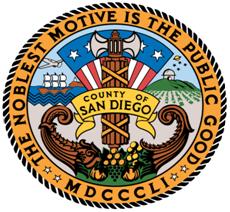Increased Commercial Sales, Decreased Unemployment Rates, Reduced Debt Burdens – US Headed Towards Economic Recovery
Post Views 4
One proven yardstick of measuring the financial health of householders is the level of their debt and their disposable income. Debt would entail their ability to repay their mortgages, credit card payments and insurance premiums. Debt, or financial obligations, consumed 14 percent of the disposable income in 2007. However, now there is a turnaround, and from a high of 14 percent, it has come down to just 10.9 percent of disposable income, which is the lowest since 1994.
This means that the common man has never had it better as far as fulfilling his financial obligations, like mortgages, credit card payments, rent and insurance premiums are concerned.
The Commerce Department has said that,”mortgage interest payments, in dollars, are lower than at any time since 2005.” How was this achieved? Debt levels have fallen. Household owe $600 billion less than what they owed in 2008 and lowered interest rates, means that clearing the debt will cost less, as accumulated interest will be less.
The debt levels have not come down only because people cleared their debts. McKinsey Global Institute estimates, that about two-thirds of the reduction has come from “cancellation of debt, through write offs and foreclosures.”
Even though many foreclosures are still pending, which could delay the deleveraging process, the economic progress is an indication that it is a process that is promising and achievable and that will considerably cut consumer debt in the country.
However, reality has to be faced by the lenders and act realistically not philosophically. Banks must understand that the loans they have given are not going to come back fully and must act accordingly. Securitizations, to whom many of the mortgage loans had been sold, must not conceal information on how some of the loans are performing. This will only delay the recovery process.
The McKinsey report has suggest six methods to adopt, that could assess and help hasten the deleveraging process. An unwavering, resolute banking system must surface and entrench itself; there has to be a realistic and reliable plan for long-term financial sustainability; structural reforms have to be made to make the financial system more competitive; the thrust on exports has to be stronger and private investment must be encouraged and last, but not the least, the housing market needs to be brought on a firm and sounder footing.
Susan Lund, the director of research for the McKinsey institute, says that of the six areas that need looking into, the US will find it difficult to stabilize the housing market and hard to formulate a credible fiscal plan.
Mortgage crisis, an unstable Walls street, increasing gas prices all continue to pull down the US economy, but increased retail sales and decreased unemployment rates, and more than anything else, reduced debts are indications of hope and promise, that good days are back again.
Increased Commercial Sales, Decreased Unemployment Rates, Reduced Debt Burdens – US Headed Towards Economic Recovery by Harrison Barnes


 Job Growth Expected in West Michigan Through 2015
Job Growth Expected in West Michigan Through 2015  Best and Worst States for Teachers to Teach
Best and Worst States for Teachers to Teach  10 Jobs with the Fastest Growing Salary in 2017
10 Jobs with the Fastest Growing Salary in 2017  San Diego County Back to Full Employment
San Diego County Back to Full Employment  Top Five Reasons Talented Employees Quit
Top Five Reasons Talented Employees Quit  Top 10 Universities to Produce Hedge Fund Workers
Top 10 Universities to Produce Hedge Fund Workers